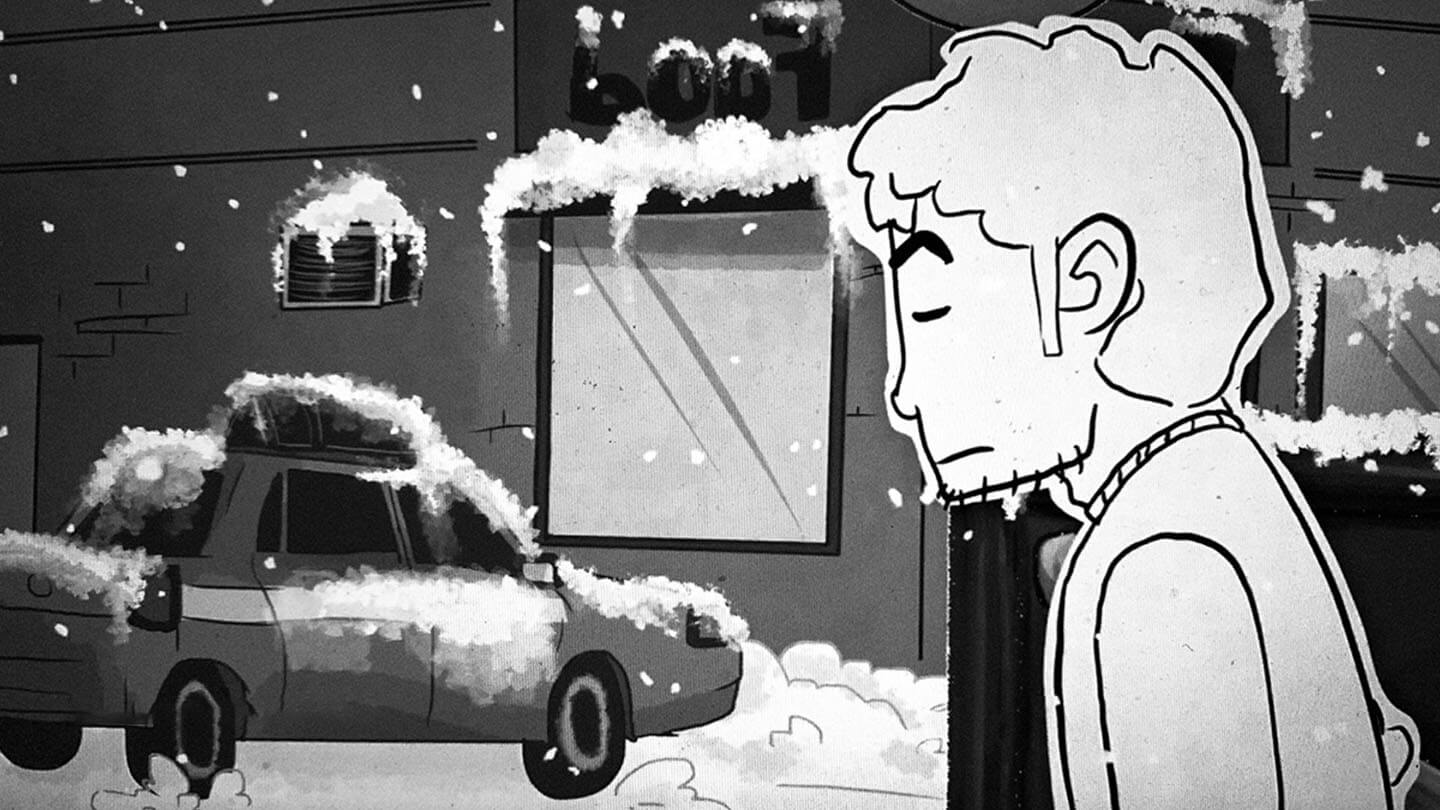Imelda O’Reilly’s documentary Tumbling Towards Home is the portrait of an actor through the people whom he loved and who made a mark on him. Actor Malcolm Adams, narrating for himself, delves into memory to understand the path that led him from Ireland to New York. An amalgam of old footage and photos, shot footage, animation, and needle drops, the documentary traces a line from the people he needed to get away from to the people who left him behind.
That line ends with a return home, resentment replaced with a newfound love for the land, thus giving the film a complete arc. It develops chronologically but starts from a point earlier than Adams himself: Irish immigration. To understand Adams’s return, the film reflects on others’ absence. For those who had to leave before Adam’s time, coming back was not an option. For Adams, who did have that option, coming back also entailed a negotiation with the two lives he had lived.
The sum of his life in Ireland is contained in his mother, also a catalyst for his departure. Stern, temperamental, and unforgiving, her relationship with him was an increasingly contentious one. His life in New York, on the other hand, is marked by his friendship with fellow student and roommate Philip Seymour Hoffman. The film’s mode of representation makes the emotional difference visible. Whereas old photos and video are used to depict his time in Ireland and his memory of his mother, the Hoffman sequence is largely depicted with playful animation. Solemnity is replaced by boyish joy, especially in an entertaining snowfight scene.
Woven through these sequences is a narrative of Adams’ immigrant experience, influenced by his experience as an aspiring actor. The tentativeness with which he approaches people in a scene from his early New York days is a definitive immigrant moment, made that much more bittersweet for the role of Irish music (Galway Bay) in it. Needle drops abound in the film, from Mazzy Star’s Fade Into You, Jim White’s Book of Angels to Portishead’s Glory Box, all signifiers of the 90s.
It is his career that repairs his relationship with Ireland. Having missed the chance to reconcile with his now late mother (understanding her trauma is his key to understanding Irish trauma), only the homeland remains in its literal, material form. Tumbling Towards Home ends with its subject having reached reconciliation with his roots, dwelling on its graces rather than its constraints. The film goes out on this note, Caitriona O’Leary’s Both Sides Now meaningfully playing over its end credits.
Watch Tumbling Towards Home Documentary Trailer
Tumbling Towards Home: Tale of the Child’s Homecoming
-
Direction
-
Cinematography
-
Screenplay
-
Editing
-
Music
